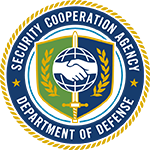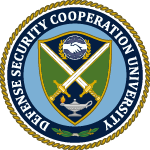BG Young Biography

Brigadier General Charles Young (1864–1922) was a distinguished United States Army officer, cartographer, teacher, and soldier-diplomat. Born into slavery, Brigadier General Young became a leading figure in the years after the Civil War, when the United States emerged as a world power. His work ethic, professionalism, academic leadership, and devotion to duty serve as an inspiration for the security cooperation workforce.
After graduating from West Point in 1889, Lieutenant Young served with the 9th U.S. Cavalry, one of the original “Buffalo Soldier” regiments, on the Western frontier. In 1894 War Department assigned him to teach military science and tactics at Wilberforce University in Ohio. Young then commanded the 9th Ohio Volunteer Infantry on the home front during the Spanish-American War in 1898 and served in the Philippine Islands during the Philippine War as a captain and troop commander. While serving at the Presidio of San Francisco, Captain Young was appointed a national park superintendent at Sequoia National Park in 1903. Young was subsequently assigned to Military Intelligence duties and appointed as one of the Army’s early military attachés to Haiti and the Dominican Republic in 1904. In addition to gathering intelligence and drafting maps, Young reported to the War Department on Haitian society and government. Young’s experiences in foreign service and as a commander in the Philippines formed the basis of his book, The Military Morale of Nations and Races (1911).
From 1912 to 1916, the newly promoted Major Young served as the military attaché to Liberia, helping to train the Liberian Frontier Force to ensure the continued sovereignty of that country. This was probably the first provision of military assistance to a partner nation, which would have been known today as a military assistance advisory group. During the 1916 Punitive Expedition, Major Young, serving as a squadron commander in the 10th Cavalry Regiment, performed gallantly on the battlefield earning him the rank of Lieutenant Colonel. In 1917, now Lieutenant Colonel Young established an officer training school for African American soldiers at Fort Huachuca, Arizona. He was promoted to Colonel a year later and served as Commander of the post.
After twenty years of service and despite riding 500 miles on horseback from Wilberforce, Ohio to Washington D.C. to demonstrate his fitness to lead, Colonel Young was medically retired in 1917. Young was recalled in 1920 to serve as a military attaché to Liberia for a second time. Colonel Young died and was buried in Lagos, Nigeria, on January 8, 1922, and was reinterred at Arlington National Cemetery in 1923. Young was inducted into the Military Intelligence Hall of Fame in 1999, and on November 1, 2021, he was honorably and posthumously promoted to Brigadier General. BG Charles Young’s legacy as a military leader and trailblazer in American history continues to inspire the security cooperation workforce.
The views and opinions that appear on the Brigadier General Charles Young Research, Analysis, and Lessons Learned Institute site are those of the author(s) and do not necessarily represent the views of DSCA/DSCU or its organizations. The appearance of external hyperlinks does not constitute DSCA/DSCU endorsement of the linked websites, or the information, products, or services therein.
The Young Institute does not endorse nor advocate published materials. The Young Institute mission is to expand the intellectual foundations and promote learning that improves the practice and advances the field of Security Cooperation.

